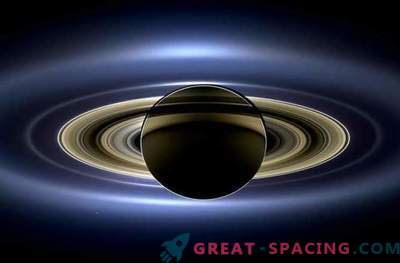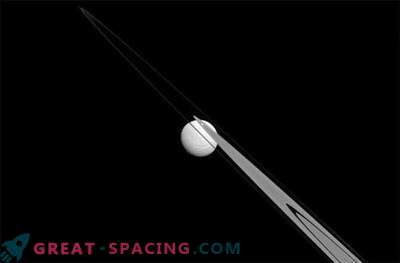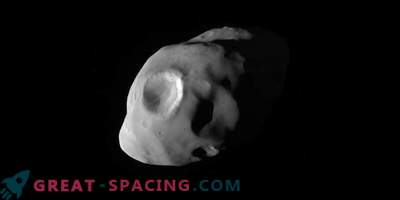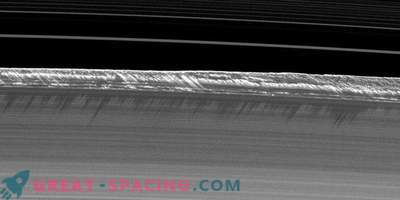
NASA's Cassini spacecraft plunges into the gap between the rings and Saturn (artistic interpretation).
The Cassini ship prepares for the second pass into the gap between Saturn and the rings. But researchers are a little puzzled that this site seems to be dust-free. This information is based on the passage on April 26th.
Using this data, the team will be able to plan the next passes to ensure maximum security.
“The area between the rings and Saturn seems completely empty,” said project manager Cassini Earl Mais from the NASA Jet Propulsion Laboratory in Pasadena, California. - “While the device is preparing for the second spurt, scientists are trying to understand why the dust level is much lower than expected.”
If there were more dust, then an antenna (in the form of a dish) would play a supporting role in the protection. Of course, this would affect the monitoring tools and the quality of communication. But it seems that the “Plan B” is no longer necessary. (21 dives left, 4 of them pass through the innermost borders of the rings of Saturn, which requires the use of an antenna as a shield).
The researchers used Cassini's images to create a model of the environment of the ring particles in the region of the gap with a width of 2000 km. It was believed that there should not be large debris, and therefore there is no serious threat to the apparatus.

Sounds and spectrograms represent data collected by RPWS (a tool on a NASA Cassini spacecraft) while crossing the plane of Saturn's rings.
Previously, no ship came so close and did not perform such operations, so the engineers tried to make it so that the 4-meter antenna could protect the device on April 26. Behind it is a tool for tracking radio and plasma waves (RPWS). He recorded hits of hundreds of ring particles per second at the moment of intersection of the ring plane. But on April 26 there were only a few blows.
If the data is converted into a sound format, it resembles cracks and creaks. Inside the gap they expected to hear a lot of noise, but there was a relative width.
According to the analysis, Cassini collided with only a few particles (about 1 micron in width). The next pass is being prepared on May 2. At this time, the camera will carefully peer into the ring. Cassini will again stop broadcasting and will resume communication only on May 3.











































